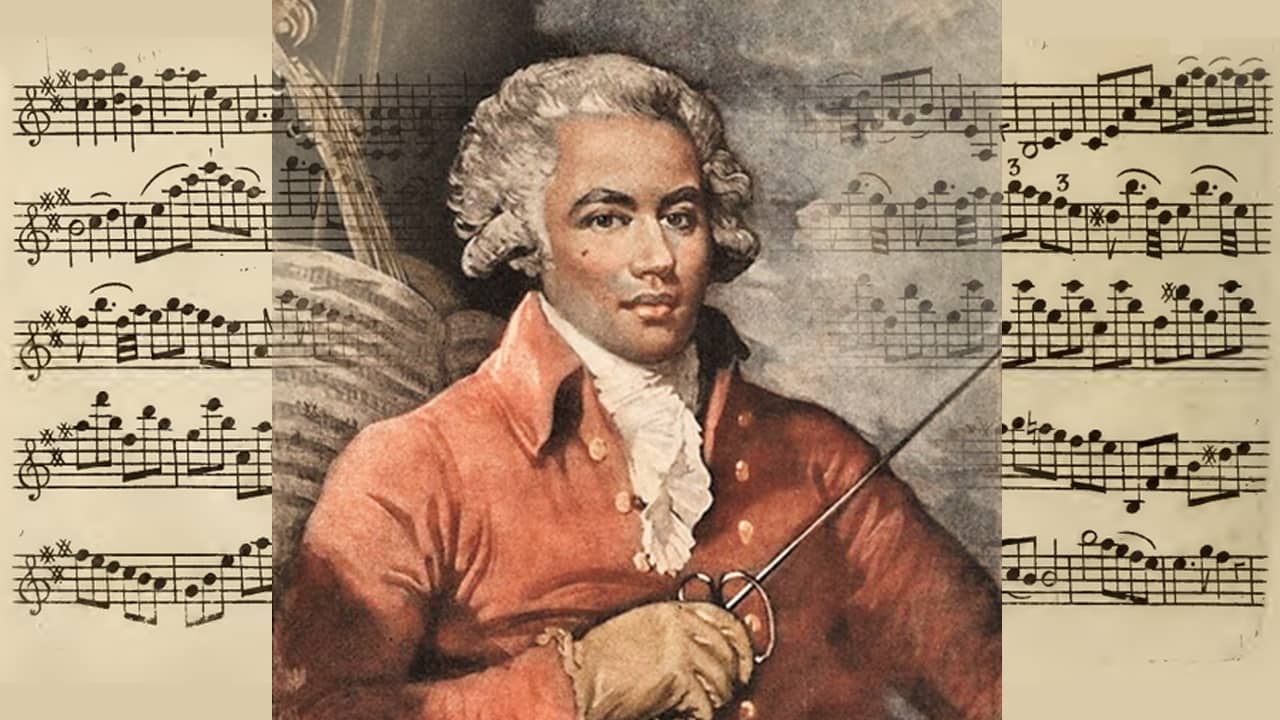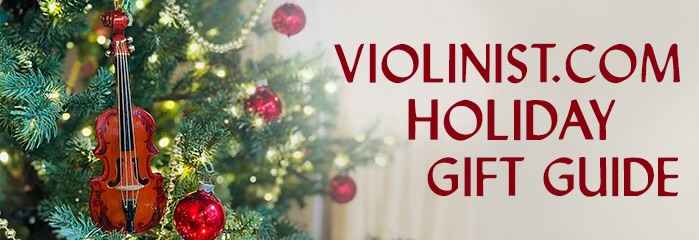Exploring the Violin Works of Joseph Bologne
Happy Black History Month! Of course, we do not wish to limit our celebration to just February on Violinist.com, so over the next year I'll be sharing a series of blogs about the violin music of Black composers, highlighting pieces at various playing levels.
While many of us love the idea of learning music from different composers, there are also practical considerations in choosing repertoire that is not yet familiar. That is where I hope to help - as a teacher and performer myself, I understand the challenge in finding pieces at the right level for a student (or for yourself), and figuring out where to add it into our existing teaching sequence, or where to place it on a program.
With that in mind, I will start with the Classical-era composer, Joseph Bologne, the Chevalier de Saint-Georges. Rachel Barton Pine has written a fantastic article about him with links to more resources, so I won’t repeat her - be sure to read that HERE.

Joseph Bologne, Chevalier de Saint-Georges, portrait by Mather Brown. Backdrop: the opening of his Concerto in A Major, Op. 5, No. 2. Illustration by Violinist.com.
Here are several pieces by Bologne for violinists of various ability levels. Please let me know in the comments if you've played any of these yourself, or have other works by Bologne to recommend!
Theme from Sonata No. 4 for Two Violins, arr. Rachel Barton Pine
This lovely arrangement takes the theme from Bologne's Sonata No. 4 for Two Violins and makes it accessible to any violinist who can play in G Major in first position, with both low 2's and high 3's. The rhythm is simple, mostly in quarter and 8th notes. Students who are in late Suzuki Book 1 or early Suzuki Book 2 would be able to play this. Enjoy the performance below by violinists Adé Williams and Clayton Penrose-Whitmore.
- Get the sheet music: Music by Black Composers, Vol. 1b
Theme from Rondeau from Concerto in A Major, Op. 5, No. 2, arr. Rachel Barton Pine
This takes the memorable theme from the last movement of Bologne's Concerto in A Major and makes it a lovely piece for early intermediate violinists. The full concerto itself is incredibly virtuosic and demanding (more on this later), but any student at a Suzuki Book 2 level and up could play this arrangement. It's all in first position with some high 3's and involves quarter, 8th, and 16th note rhythms. Enjoy the performance below by violinist Hannah White and pianist Matthew Hagle.
- Get the sheet music: Music by Black Composers, Vol. 2
Sonata No. 3 in G Minor
This beautiful chamber work would be a lovely addition to any recital program! It would work either for a student learning the Classical style for the first time, or for a seasoned professional looking for a piece from that era for a recital. It requires quite a bit of third position, a few doublestops, lots and lots of arpeggios/string crossings, and an excellent pianist. I would recommend this for upper-intermediate-level violinists who are at a Suzuki Book 6 level or higher.
- Get the sheet music: Bologne: Sonata No. 3 in G minor. Sleepy Puppy Press
Theme from Sonata No. 4 for Two Violins, arr. Rachel Barton Pine - harder version.
Another fabulous arrangement from Rachel Barton Pine here - the same Sonata as the first piece listed, but this one includes more variations and is for more advanced violinists. Comfort with playing double stops in thirds, fast arpeggio and scale passages, and three-octave scales is strongly recommended. She kindly made this free for Violinist.com readers as part of her article on Bologne, so you don't need to wait to play it!
- Get the sheet music: Rachel's score, offered free on Violinist.com
Concerto in A Major, Op. 5, No. 2
This is a full concerto for an advanced violinist with some serious chops. Fast scales, arpeggios, double stops, and 10ths - it's exciting and lovely for the virtuoso who has the time to put into it. I would recommend that this not be the very first Classical-era concerto that a student has learned, but it could be a wonderful addition to a program for a very advanced (think college or conservatory level) student.
Enjoy Augustin Hadelich's fantastic recording of it below, and if you want to hear the last movement at lightning speed, Anne-Sophie Mutter and her Virtuosi take it even faster than Hadelich (Click HERE.
- Get the sheet music: Bologne: Concerto in A Major, Op. 5, No. 2 - Artaria Editions
Six Concertante Quartets
If you have a string quartet, check out Bologne's Six Concertante Quartets. Any of them would be wonderful on a formal recital, or potentially for background music at an elegant event. Below is a recording of Quartet No. 1 in B-flat Major, played by the Arabella String Quartet.
- Get the sheet music: Bologne: Six Concertante Quartets - Artaria Editions
Let me know in the comments if you’ve played one of these pieces, or if there is another piece by Bologne that you’d recommend - happy exploring!
You might also like:
- The Real History and Works of Joseph Bologne (by Rachel Barton Pine)
- https://www.violinist.com/blog/laurie/20235/29611/
- Teaching Violin with Diverse Repertoire: ASTA Session with Claire Allen
* * *
Enjoying Violinist.com? Click here to sign up for our free, bi-weekly email newsletter. And if you've already signed up, please invite your friends! Thank you.
Replies
Wonderful write-up!
This article has been archived and is no longer accepting comments.
Violinist.com is made possible by...
International Violin Competition of Indianapolis
Violinist.com Holiday Gift Guide
Dimitri Musafia, Master Maker of Violin and Viola Cases
Johnson String Instrument/Carriage House Violins
Subscribe
Laurie's Books
Discover the best of Violinist.com in these collections of editor Laurie Niles' exclusive interviews.

Violinist.com Interviews Volume 1, with introduction by Hilary Hahn

Violinist.com Interviews Volume 2, with introduction by Rachel Barton Pine








February 5, 2025 at 10:09 PM · Claire, thank you so much, it is so helpful to have this information about the levels and skills required for these pieces!